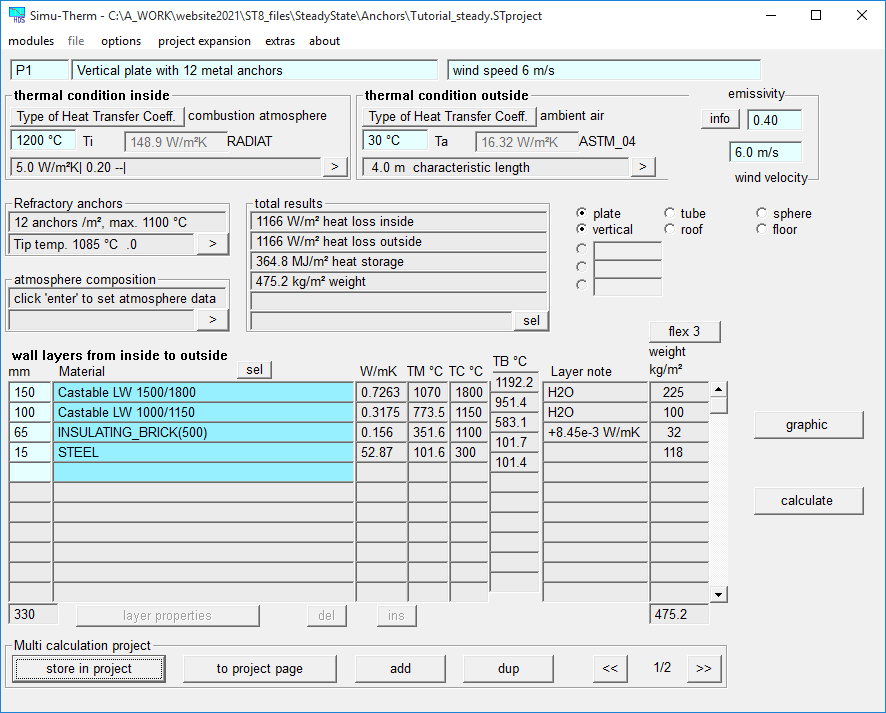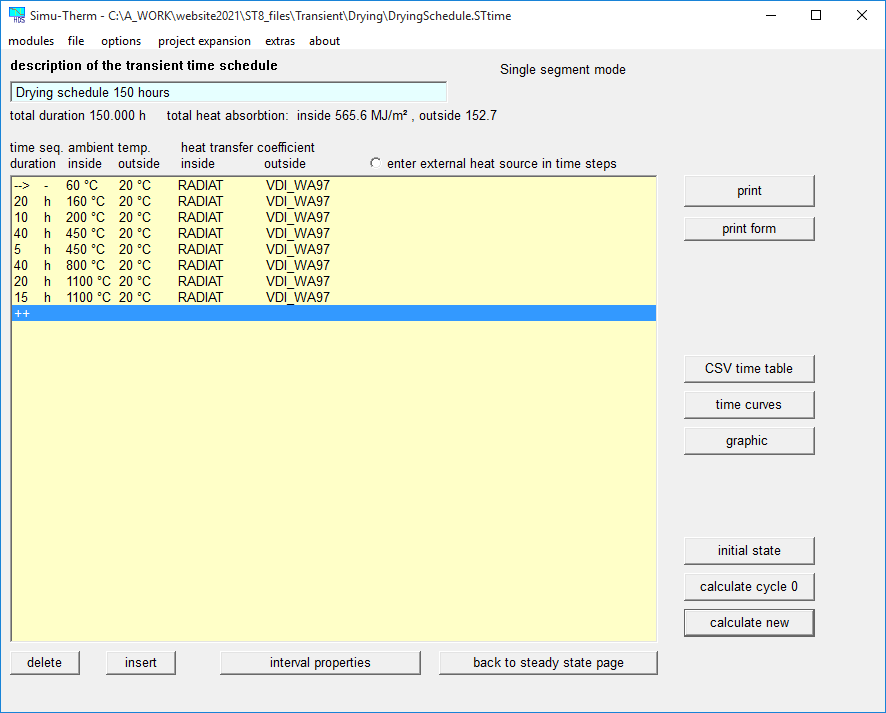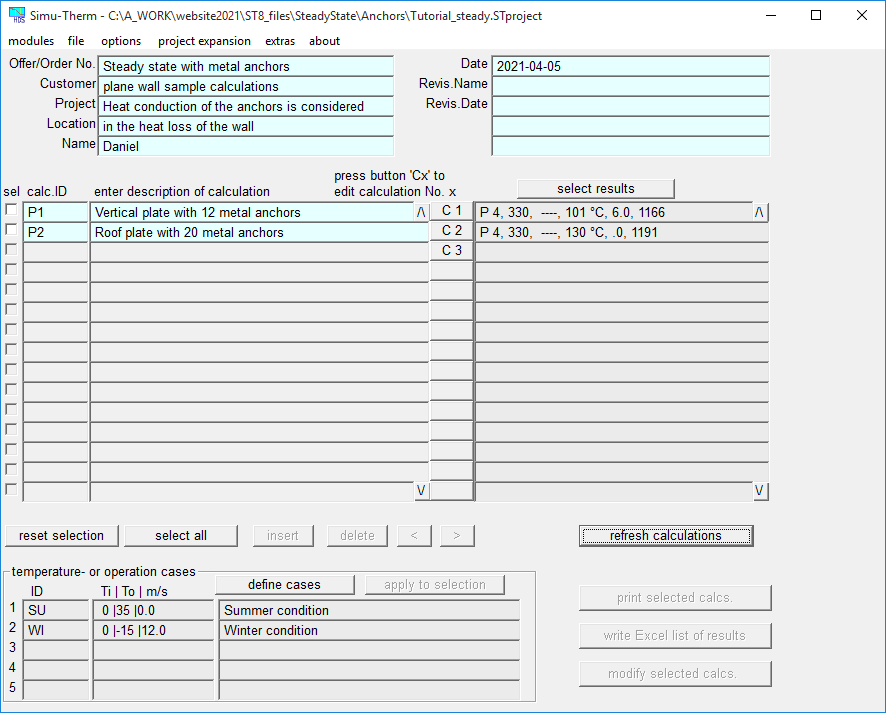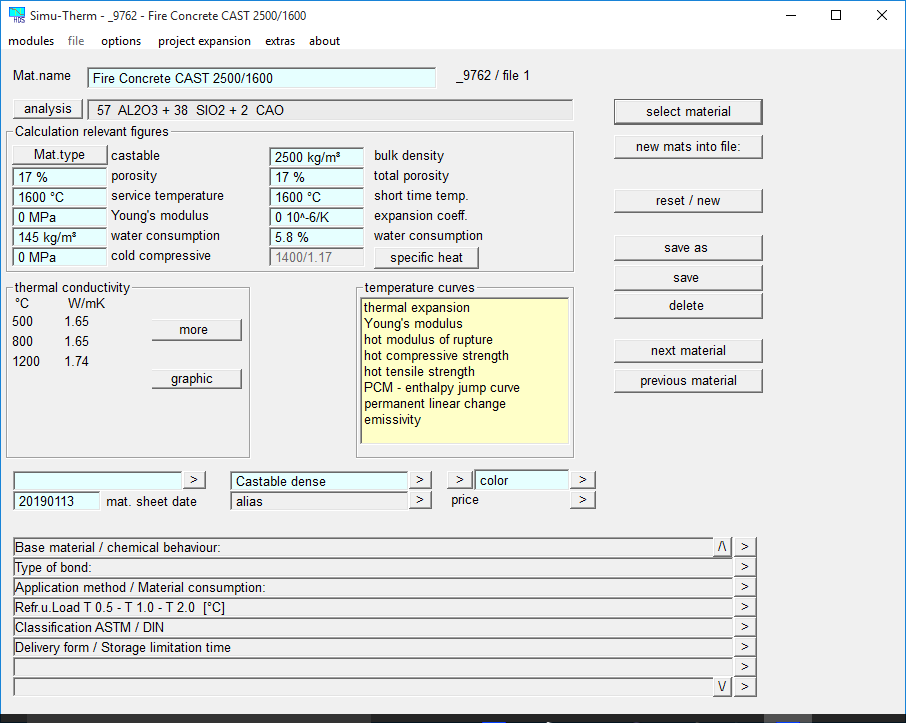Proven in industrial applications since decades
SIMU-THERM is a high end heat transfer calculation software developed for refractory design.
SIMU-THERM provides both steady state and transient calculation (transient in an extension)
Due to the precise mathematical modelling of the heat transfer process it is appropriate for all kinds of high temperature applications.
The initial program was written in the late 1980s on the authors' experience in refractory design and thermal computation.
Today it is improved continually in contact with renowned companies using SIMU-THERM every day.
Languges and unit systems
Currently the GUI can switch between the languages English, French, German, Italian, Polish.
Printing is possible in English, French, German, Italian,Spanish
The unit systems are the European metric system and the US imperial system.
Suitable for occasional and experienced users
SIMU-THERM 7.1 is a self-explanatory Windows program. Thus it is suitable for occasional users as well as experienced professionals.
While occasional users can rely on the predefined features, SIMU-THERM offers high flexibility for experienced users:
- SIMU-THERM’s print layout can be can be customized (e.g. add your company logo and much more)
- Users can add print languages by translating a small vocabulary list
- It is possible to switch between the unit systems when entering a calculation or a material
- Specified figures can be altered in a set of calculations in a single step
Unique but essential capabilities
SIMU-THERM provides several features which are unique for a heat loss software but yet essential for industrial applications.
- Simulation of ventilated air spaces, e.g. for weather shields outside the shell
- Pressure dependent calculation of static air gaps, e.g. for vacuum insulation
- Impact of condensed water in insulation layers is considered
- Temperature in containers and metal gutters can be simulated
- Fire protection simulation is well supported
- Heating up conditions with power limitation can be simulated
- And more ...






